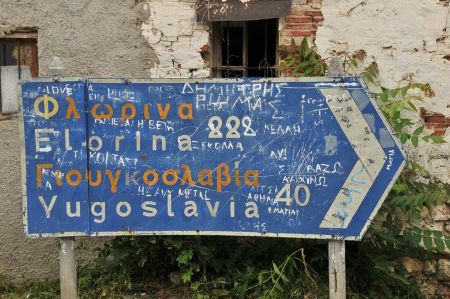Arrival in Struga on Lake Ohrid under a cloudless sky
- Written by Portal Editor
We set off from Thessaloniki in the morning to drive the 280 kilometres to Lake Ohrid to Struga to the Rino campsite. To avoid a detour on the motorway, we chose our route on the E86 via Edessa.
Shortly before Lake Vegerotida we decided to continue following the old E86 towards Kella, despite the "determining" voice of the navigation system telling us to turn back, we didn't continue straight ahead towards Aminteo. A little later the route became a bit adventurous, as it went into the mountains in narrow serpentines. In Kella we came across a sign saying that the path leads to “Yugoslavia”. A street sign “outlasts” a state!
In addition to the obligatory welcome mocha
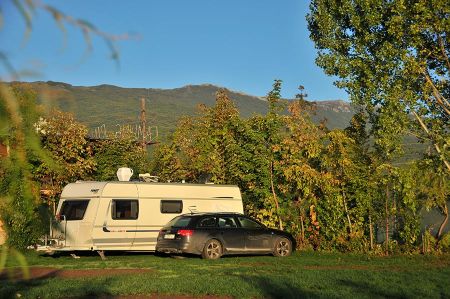 We crossed the Greek-Macedonian border towards Bitola (Roman Herakleia Lynkestis, the ruin field is right on the edge of the city), from where we continued along the Baba Mountain range to Ohrid (Roman Lychnidod) and from there to Struga (Roman probably Enhallon) goes. The route was well known to us from our explorations last year, as it largely runs parallel to the old route of the Roman Via Egnatia. A little later we arrived at the Rino campsite, where the Sadiku family, hospitable as usual, was waiting for us. In addition to the obligatory welcome mocha, which camp guests receive free of charge every day, Ms. Sadiku had prepared a special surprise for us: a traditional Macedonian pizza made from corn flour. Maybe she'll tell us the recipe later!
We crossed the Greek-Macedonian border towards Bitola (Roman Herakleia Lynkestis, the ruin field is right on the edge of the city), from where we continued along the Baba Mountain range to Ohrid (Roman Lychnidod) and from there to Struga (Roman probably Enhallon) goes. The route was well known to us from our explorations last year, as it largely runs parallel to the old route of the Roman Via Egnatia. A little later we arrived at the Rino campsite, where the Sadiku family, hospitable as usual, was waiting for us. In addition to the obligatory welcome mocha, which camp guests receive free of charge every day, Ms. Sadiku had prepared a special surprise for us: a traditional Macedonian pizza made from corn flour. Maybe she'll tell us the recipe later!
The border with Albania at Qafë Thana / Čafasan is only eight kilometers away
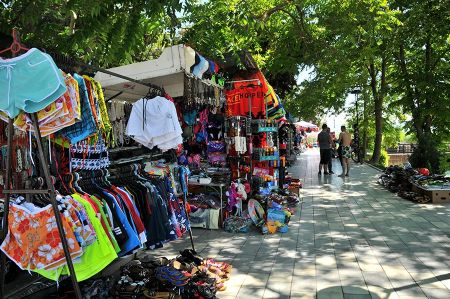 Struga itself is a small town of around 16,500 inhabitants in southwest Macedonia. As already mentioned, it is located directly on Lake Ohrid, is the official seat of the Opština named after it and is divided into a western and an eastern part of the city by the Black Drin.
Struga itself is a small town of around 16,500 inhabitants in southwest Macedonia. As already mentioned, it is located directly on Lake Ohrid, is the official seat of the Opština named after it and is divided into a western and an eastern part of the city by the Black Drin.
The border with Albania at Qafë Thana / Čafasan is only eight kilometres away; The Roman Via Egnatia, like today's modern road, once led through the Shkumbin Valley via Elbasan to the Mediterranean. There will be further reports on this later.
The Via Egnatia trade route ran through Enhallon at this time
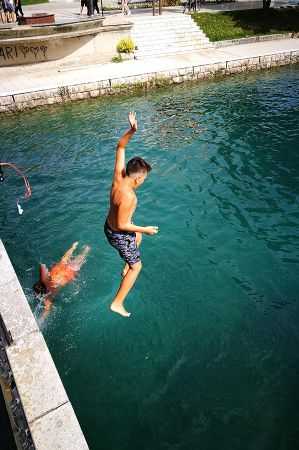 Ancient peoples and tribes such as the Illyrians, the Macedonians and the Greeks settled around the lake and founded the cities of Lychnidos (modern-day Ohrid), Enhallon (perhaps modern-day Struga) and Damastion. There was a silver mine in the Illyrian city of Damastion, the location of which is not known but is recorded from the silver coins minted there. The cities benefited from raw materials such as gold and silver in the area. The settlement area on Lake Ohrid has always been controversial and the scene of repeated conflicts. The Macedonians were able to bring the region under their rule under Philip II (359–336 BC). At the turn of the first millennium, Ohrid was briefly the capital of the Bulgarian Empire.
Ancient peoples and tribes such as the Illyrians, the Macedonians and the Greeks settled around the lake and founded the cities of Lychnidos (modern-day Ohrid), Enhallon (perhaps modern-day Struga) and Damastion. There was a silver mine in the Illyrian city of Damastion, the location of which is not known but is recorded from the silver coins minted there. The cities benefited from raw materials such as gold and silver in the area. The settlement area on Lake Ohrid has always been controversial and the scene of repeated conflicts. The Macedonians were able to bring the region under their rule under Philip II (359–336 BC). At the turn of the first millennium, Ohrid was briefly the capital of the Bulgarian Empire.
The Illyrian Brygians and Encheleans were probably the first peoples to historically settle the place. The Dassaretes, also Illyrians, were added later. Over the centuries, the fishing settlement developed into a town-like place, which was called Enhallon (possible meaning: “eel”). However, this predecessor city of Struga has not yet been located.
So is the Church of Saint Erasmus
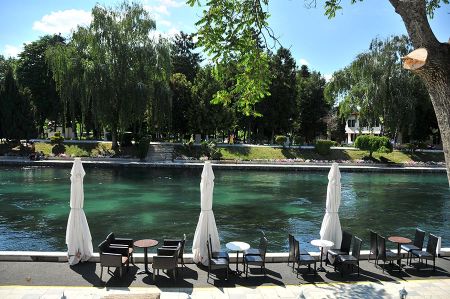 The ancient historian Polybius mentions Enhallon in his works and says that the place was inhabited from 359 BC. It was conquered by Philip II along with neighbouring Lychnidos and other cities on Lake Ohrid in the 1st century BC. The city was part of ancient Macedonia until 148 BC. BC, where it was then incorporated into their empire by the Romans. The important Roman trade route Via Egnatia ran through Enhallon at this time, connecting the eastern Adriatic coast with Thessaloniki and Constantinople. At the turn of the first millennium, Ohrid was briefly the capital of the Bulgarian Empire.
The ancient historian Polybius mentions Enhallon in his works and says that the place was inhabited from 359 BC. It was conquered by Philip II along with neighbouring Lychnidos and other cities on Lake Ohrid in the 1st century BC. The city was part of ancient Macedonia until 148 BC. BC, where it was then incorporated into their empire by the Romans. The important Roman trade route Via Egnatia ran through Enhallon at this time, connecting the eastern Adriatic coast with Thessaloniki and Constantinople. At the turn of the first millennium, Ohrid was briefly the capital of the Bulgarian Empire.
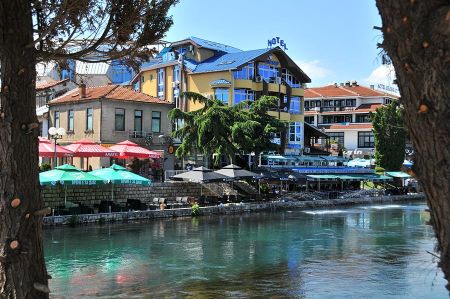 With the spread of Christianity from the 3rd century AD, the ancient temples were destroyed and basilicas were built on their foundations, which belonged to early Christianity. Many remains of these basilicas were discovered around Struga. The Church of Saint Erasmus - located around nine kilometres east of the city centre on the road to Ohrid - is the first Christian missionary in the area (approx. 6th century).
With the spread of Christianity from the 3rd century AD, the ancient temples were destroyed and basilicas were built on their foundations, which belonged to early Christianity. Many remains of these basilicas were discovered around Struga. The Church of Saint Erasmus - located around nine kilometres east of the city centre on the road to Ohrid - is the first Christian missionary in the area (approx. 6th century).
In the 6th century, Enhallon, Lychnidos and other settlements around the lake become part of the Eastern Roman (Byzantine) Empire. During this time, the Slavic Wersite tribe settled in the region.
Reeds grow all along the city's lakeshore
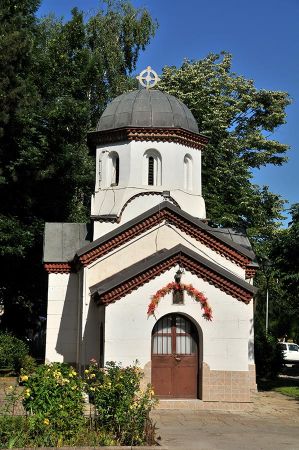 In the immediate vicinity of today's Struga urban area there are almost no forests, as is the case on the entire plateau. The fields that were once used for agriculture here were used for vegetables and grain, rather than for livestock breeding. Today, the majority of agriculture has fallen into disrepair. Only individual families and businesses still cultivate the fertile lowlands of Struga. Many fields are overgrown with trees and wild bushes. The entire Drin valley in Struga was once cultivated for agriculture. At that time, the crops grown were corn, potatoes, tomatoes, sunflowers, occasionally wheat and, above all, hot peppers. Today these plants are mostly grown in gardens in many villages in the valley and on a few fields in the lowlands. Large areas of the valley have become overgrown. Reeds grow all along the city's lakeshore, which suggests that nature is intact; only in the west of the city are there larger, free pebble beaches.
In the immediate vicinity of today's Struga urban area there are almost no forests, as is the case on the entire plateau. The fields that were once used for agriculture here were used for vegetables and grain, rather than for livestock breeding. Today, the majority of agriculture has fallen into disrepair. Only individual families and businesses still cultivate the fertile lowlands of Struga. Many fields are overgrown with trees and wild bushes. The entire Drin valley in Struga was once cultivated for agriculture. At that time, the crops grown were corn, potatoes, tomatoes, sunflowers, occasionally wheat and, above all, hot peppers. Today these plants are mostly grown in gardens in many villages in the valley and on a few fields in the lowlands. Large areas of the valley have become overgrown. Reeds grow all along the city's lakeshore, which suggests that nature is intact; only in the west of the city are there larger, free pebble beaches.
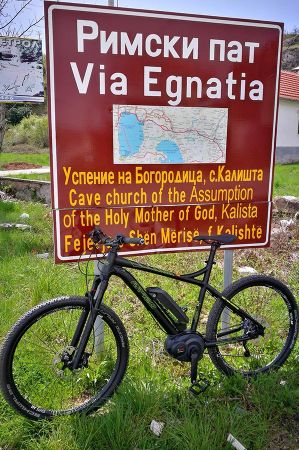 In recent years, many villages in the municipality have been abandoned due to limited employment opportunities, which has led to problems within the communities. Fishing is hardly done today; However, there are still a few companies that primarily breed the well-known Ohrid trout. The largest company of this kind is located in the neighbouring village of Šum / Shum. Only with the beginning of tourism could this rural exodus be at least stopped.
In recent years, many villages in the municipality have been abandoned due to limited employment opportunities, which has led to problems within the communities. Fishing is hardly done today; However, there are still a few companies that primarily breed the well-known Ohrid trout. The largest company of this kind is located in the neighbouring village of Šum / Shum. Only with the beginning of tourism could this rural exodus be at least stopped.
Today, tourism is probably the most important economic factor during the summer season and the New Year. In recent years, many hotels and restaurants have been built on the beaches of Struga - as in Ohrid and Pogradec (Albania). Above all, tourists come to the city on the Drin from Macedonia, Kosovo, Albania, Bulgaria, Greece and Serbia. In recent years we have also seen more and more Dutch and Japanese people.
Please read as well:
Day trip to Lychnidos - today called Ohrid
Excavation and Conservation Works in Stobi, Macedonia
-
 Struga - Lake Ohrid second arrival
Struga - Lake Ohrid second arrival
Struga - Lake Ohrid second arrival
Struga - Lake Ohrid second arrival
-
 Struga - Lake Ohrid second arrival
Struga - Lake Ohrid second arrival
Struga - Lake Ohrid second arrival
Struga - Lake Ohrid second arrival
-
 Struga - Lake Ohrid second arrival
Struga - Lake Ohrid second arrival
Struga - Lake Ohrid second arrival
Struga - Lake Ohrid second arrival
-
 Struga - Lake Ohrid second arrival
Struga - Lake Ohrid second arrival
Struga - Lake Ohrid second arrival
Struga - Lake Ohrid second arrival
-
 Struga - Lake Ohrid second arrival
Struga - Lake Ohrid second arrival
Struga - Lake Ohrid second arrival
Struga - Lake Ohrid second arrival
-
 Struga - Lake Ohrid second arrival
Struga - Lake Ohrid second arrival
Struga - Lake Ohrid second arrival
Struga - Lake Ohrid second arrival
-
 Struga - Lake Ohrid second arrival
Struga - Lake Ohrid second arrival
Struga - Lake Ohrid second arrival
Struga - Lake Ohrid second arrival
-
 Struga - Lake Ohrid second arrival
Struga - Lake Ohrid second arrival
Struga - Lake Ohrid second arrival
Struga - Lake Ohrid second arrival
-
 Struga - Lake Ohrid second arrival
Struga - Lake Ohrid second arrival
Struga - Lake Ohrid second arrival
Struga - Lake Ohrid second arrival
-
 Struga - Lake Ohrid second arrival
Struga - Lake Ohrid second arrival
Struga - Lake Ohrid second arrival
Struga - Lake Ohrid second arrival
-
 Struga - Lake Ohrid second arrival
Struga - Lake Ohrid second arrival
Struga - Lake Ohrid second arrival
Struga - Lake Ohrid second arrival
-
 Struga - Lake Ohrid second arrival
Struga - Lake Ohrid second arrival
Struga - Lake Ohrid second arrival
Struga - Lake Ohrid second arrival
https://www.alaturka.info/en/macedonia/struga/6375-arrival-in-struga-on-lake-ohrid-under-a-cloudless-sky#sigProIde44c52f205
